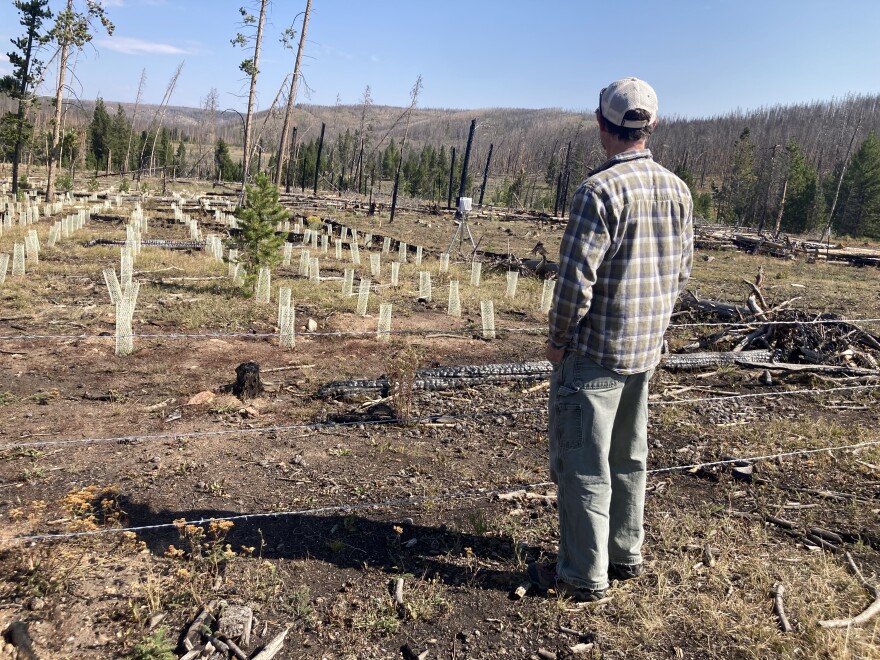In a burned forest in the Snowy Range, University of Wyoming botanist Daniel Laughlin bent over 10 tiny trees inside plastic nets.
“Here's one we haven't seen yet. This is bristlecone pine,” he said.
Normally, bristlecone pine live well above timberline, not here among the much lower lodgepole pine forest at around 9,000 feet. But Laughlin wanted to see how adaptable this species is to different altitudes. He counted how many seedlings survived this year’s dry summer.
“Let's see. That's one, two, three out of four, five, six, seven. I think we got 80% survival,” he said.
Last spring, Laughlin and his grad students planted 10 conifers and dozens of smaller plant species. The goal is to see which species could adjust to so-called assisted migration, allowing humans to help struggling species move to different ecosystems as the climate warms.
Laughlin said his studies show that species can grow in a range 25% wider than they live in. He said that could mean they could be moved outside the traditional ecosystem we associate with these species.
He recognized that’s a novel concept.
“I think we do need to be more open-minded about what the land in future landscapes would look like. We're living in a dynamic climate, and we need to be open to the possibility that what our kids and grandkids will be recreating in might have to be quite different than what we were used to.”
So far, 80% of the trees and plants have survived this year’s dry summer. But Laughlin says the real test will be surviving winter.




